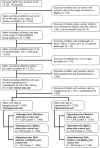Synergic interaction between ritodrine and magnesium sulfate on the occurrence of critical neonatal hyperkalemia: A Japanese nationwide retrospective cohort study
- PMID: 32385354
- PMCID: PMC7210882
- DOI: 10.1038/s41598-020-64687-w
Synergic interaction between ritodrine and magnesium sulfate on the occurrence of critical neonatal hyperkalemia: A Japanese nationwide retrospective cohort study
Abstract
Our aim was to evaluate the association between ritodrine and magnesium sulfate (MgSO4) and the occurrence of neonatal hyperkalemia or hypoglycemia among late preterm infants in a retrospective cohort study. We used a nationwide obstetrical database from 2014. A total of 4,622 live preterm infants born at 32-36 gestational weeks participated. Fourteen risk factors based on both clinical relevance and univariate analysis were adjusted in multivariable logistic regression analyses. Neonatal hyperkalemia and hypoglycemia occurred in 7.6% (284/3,732) and 32.4% (1,458/4,501), respectively. Occurrence of hyperkalemia was associated with concomitant usage of ritodrine and MgSO4 compared with no usage (adjusted odds ratio [aOR] 1.53, 95% confidence interval [CI] 1.09-2.15). Occurrence of hypoglycemia was associated with ritodrine alone (aOR 2.58 [CI 2.21-3.01]) and with concomitant usage of ritodrine and MgSO4 (aOR 2.59 [CI 2.13-3.15]), compared with no usage, and was associated with long-term usage (≥ 48 hours) of ritodrine and cessation directly before delivery. In conclusion, in late preterm infants, usage of ritodrine together with MgSO4 was associated with occurrence of critical neonatal hyperkalemia, and long-term usage of ritodrine and cessation directly before delivery were associated with neonatal hypoglycemia.
Conflict of interest statement
The authors declare no competing interests.
Figures

References
-
- Japan Council for Quality Health Care. Dai 7 kai Sanka Iryo Hosho Seido: Saihatsu boushi ni kansuru houkokusho [Japan Obstetrics Compensation System for Cerebral Palsy: Report for Preventive Measure] [in Japanese]. (ed. Japan Council for Quality Health Care) (Japan Council for Quality Health Care, 2017).
-
- Suzuki S. Shussei souki no shinseiji kyuuhen ni taiousuru [Strategy for the emergent serious condition of neonates] [in Japanese] Acta Obst. Gynaec. Jpn. 2016;68:133–136.
-
- Itani Y. Yokisenu shussyou go souki no shinseiji kou K kessyou [Unexpected neonatal hyperkalemia in early neonatal period] [in Japanese] JAOG news. 2015;67:10–11.
-
- Takayanagi T, et al. Seigo 24 jikan inai ni shoukousei no kou kariumu kessyou wo kitashita seijukuji no 2 rei [Occurrence of symptomatic hyperkalemia within 24 hours after birth in two term newborns] [in Japanese] Acta Neonatologica Japonica. 2002;38:833–836.
-
- Hosoda N, Uchida T, kyoba S, Watanabe M. Botai heno ryuusan magunesiumu touyo ni yori kou kariumu kessyou to kin kintyou teika wo kitashita soutai [Twins with hyperkalemia and hypotonia born from mother with administration of magnesium sulfate during pregnancy] [abstract] [in Japanese] J. Jpn. Soc. Perin. Neon. Med. 2008;44:654.
Publication types
MeSH terms
Substances
LinkOut - more resources
Full Text Sources
Medical

